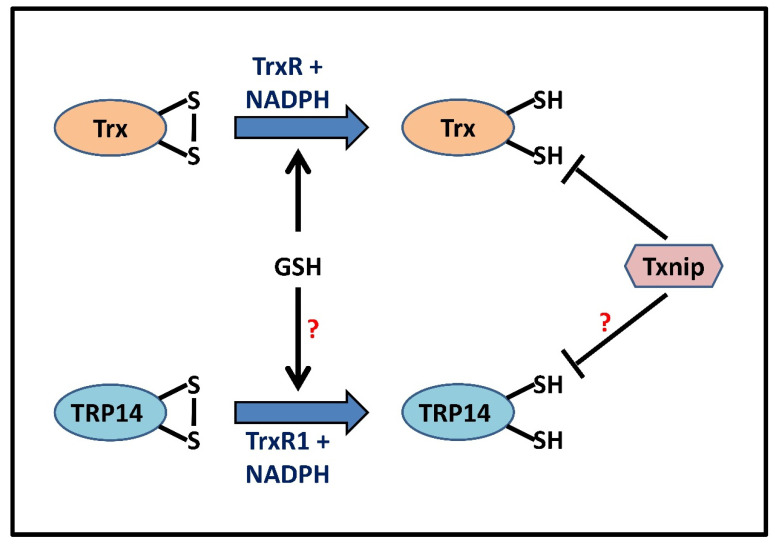Figure 4.
Proposed schematic representation predicting parallels between GSH and redoxin systems. Oxidized Trx (Trx-S2) is reduced back to its vicinal dithiol (Trx-(SH)2) form by TrxR, utilizing NADPH as an electron donor. TRP14, with a redox potential similar to that of Trx1, proceeds in a similar way that uses both its active site thiols in a TrxR1-dependent NADPH oxidation. GSH (5–10 mM), stimulated by the Grx/GR system, can directly reduce Trx in the absence of TrxR, thus acting as a cellular backup, whereas Txnip inhibits the reducing activity of Trx via a disulfide exchange reaction [77,78]. This figure also hypothesizes GSH-catalyzed reduction and Txnip-mediated inhibition of TRP14 activity in a manner analogous to that of Trx.

